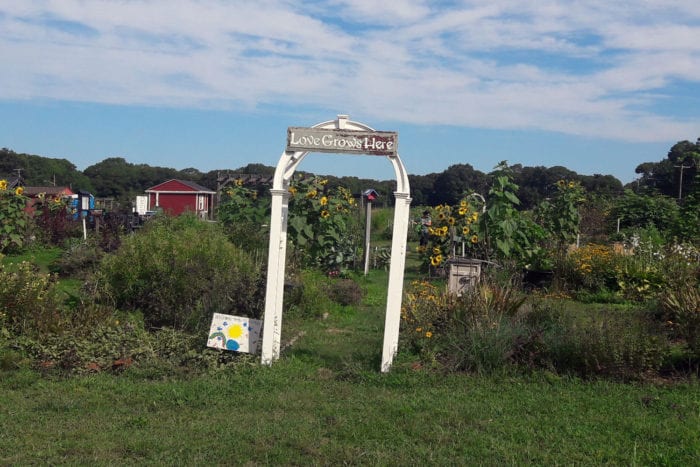An unexpected storm hit Long Island on Sunday, causing severe damage to areas within the township of Smithtown. Destructive straight-line winds up to 60 m.p.h. caused downed power lines with uprooted, fallen and large tree limbs causing multiple power outages in the area. The Town of Smithtown was one of the three towns in Suffolk County to be hit the hardest.
All emergency response units are still working to clean up and address the needs of the community. Residents who are still without power, or with spoiled food and tree debris have a number of resources available to them to ensure quality of life is restored before the holiday weekend.
“It was a fun day with the whole family, that quickly became frightening. I ran up to Main Street, Kings Park after the storm passed to survey trees on top of cars, power outages and to assess the damage,” said Supervisor Ed Wehrheim (R). “I was very pleased to see Public Safety & the Highway Department were on scene shortly after… Residents without power, spoiled food to dispose of, or storm debris in need removal, are reminded to contact the appropriate departments so we can help get your home ready for the July 4th weekend. Please know we are working around the clock to cleanup in this unexpected event and we will not rest until your standard of living has been reinstated.”
Municipal Services Facility (MSF) will be open to residents who wish to dispose of spoiled food from the power outages, during regular business hours. Private garbage carters do not pick up waste on holidays, which includes Thursday, July 4. Residents with a larger than normal amount of garbage may wish to drop off solid waste to MSF which is located at 85 Old Northport Road in Kings Park. Hours are from 7 a.m. to 11:45 a.m. and 12:45 p.m. to 3:15 p.m. five days a week. No hazardous waste will be accepted.
Tree and debris removal operations have been underway since the storm passed Sunday afternoon. While the highway department’s fleet continues efforts to remove all “right-of-way” town tree debris, residents should be mindful to place neatly piled branches, cut to no longer than 6 feet in length, at the roadside. Smaller branches should be tied and bundled.
“If you still have trees waiting to be picked up, please call the highway department with the address of the removal,” said Robert Murphy, Superintendent of Highways. “I would just ask that residents have patience as we get through the cleanup, after this unexpected storm. Our team is dealing with lots of landscapers dumping debris on the street, not adhering to the town code. This causes delays in our operations as we need to stop to cut large stumps and trees. However, We won’t stop until we’ve gotten to every call.” –
The Smithtown Highway Department addressed approximately 250 to 300 fallen or uprooted trees reported to the Department. That number is expected to increase as cleanup is still underway.
Storm Damage Totals:
According to PSEG Long Island, over 17,000 residents in the Commack and Hauppauge areas experienced power outages. The majority of those customers now have power. On Tuesday, July 2, there were approximately 1,800 PSEG customers in the Town of Smithtown affected by outages, primarily in Commack. As of this morning ,July 3, that number has been reduced to 80 customers affected. PSEG estimates that power will be restored to every customer in Smithtown by 7PM this evening.
Last night, PSEG briefly shut down power in the Pickwick Drive area (between Veterans Memorial Highway and Jericho Turnpike) and along Harned Road and Wyandanch Boulevard, in order to cut down damaged trees leaning on power lines.
Power Outages – PSEG Information: View PSEG Long Island’s outage map Click Here
To report and receive status updates on an outage Text OUT to PSEGLI (773454) or to report an outage online visit www.psegliny.com.
To register, have your account number available and text REG to PSEGLI (773454)
Downed wires should always be considered “live.” Do not approach or drive over a downed line and do not touch anything contacting the wire. To report a downed wire, call PSEG Long Island’s 24-hour Electric Service number: 1-800-490-0075.
Tree Debris, Flooding or Road Concerns: To report tree debris for pickup, flooding and other storm related conditions along the roads, please contact the Highway Department at (631) 360-7500.
Stranded Vehicles: If there is an emergency, please dial 911 immediately. All non life-threatening calls can be directed to the Department of Public Safety by calling (631) 360-7553.
Suffolk 311: Suffolk County 311 is a central call center available to residents who do not know which number to call for any non-emergency. Residents can reach the 311 line Monday through Friday from 9 a.m. to 4:30 p.m. or leave messages after hours.
Animals & Family Pets: Outdoor animals should be sheltered indoors for the duration of any storm. To report animals in distress, strays or other loose domestic or wild animals please call (631) 360-7575.
Elderly Neighbors & Special Needs individuals: Always check on your neighbors living with disabilities, special needs or senior citizens. Make sure they have an emergency phone, plenty of water, food and blankets. Ask if they have someone to call in the event of an emergency.
Photo by Mark Stevens
























